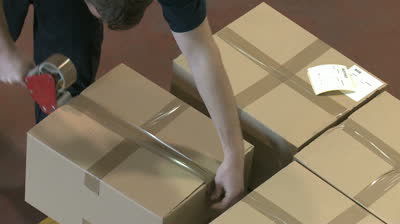When liquidating excess merchandise through a liquidation company, there are several steps you should follow in order to make the liquidation and proposal process as smooth as possible.
Liquidators often receive many inquiries from companies looking to move their excess stock, and the more information you can provide, the more likely you are to get a deal going quickly with minimal back-and-forth emails requesting additional information from you.
Every merchandise liquidator works a little bit different but the general rules of thumb are that the following information should be available in some form:
1. A list of what you need to liquidate.
Know your product, and know what you have. It is okay to have a mixed lot of every assorted items but you should be prepared to discuss the category of product, the condition of the product and approximately what your load is made up of. Liquidators will need to create website listings and marketing materials based on the information you provide so the more you know about what is being liquidated, the better.
You do not need to have an exact manifest (although manifests are always preferred), but a general list of the products and quantities is usually a good starting point.
2. Photos of the products you need to liquidate.
In many cases, liquidators will work on selling your lot for you sight unseen – meaning you need to provide as many images as possible so that the liquidator can design the marketing materials appropriately. You can also send samples to the liquidator, but it is a good idea to take some photos of the items as well and send them over with your initial liquidation inquiry email. If your product is not mainstream, a photo can help the liquidator determine what the item is, if they have a market for it and what it can be priced at.
3. UPC codes or other identifying information.
If available, provide the liquidation company with the UPC or ASIN codes of the product you with to liquidate. They will conduct research online to see what the items are selling for across various selling platforms and being able to pinpoint the exact item is very helpful.
4. Collect your marketing materials.
If you are liquidating products that you were previously selling in your core business, you may have marketing materials, brochures, email campaigns, images and spec sheets that were used in your original marketing of the product. All of these items are very helpful to liquidation companies who will work with your product. Collect these materials and send them to the liquidator to help them in creating the promotional materials for your load. The more information you provide, the richer and more enticing their product listing will be for potential buyers.
5. Know the size and weight of your lot and how it is packaged.
Liquidation companies will need to get shipping quotes for their customers before they can close a sale of your products. For this, they will need to know how the lot is packaged (in loose boxes or on pallets), the weight of the lot and the type of pickup location it will be. Are the items housed in a home garage? Are they in a commercial warehouse with a loading dock? Are they in a storage facility? This information is necessary in order for the liquidator to make the sale of your products to their customers. The sooner you provide the information, the sooner your lot can be pitched for sale.




